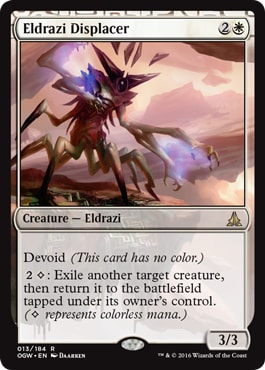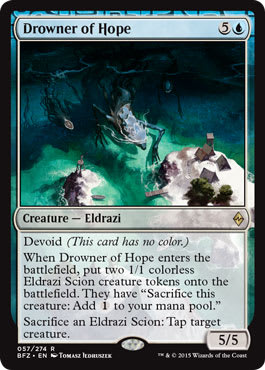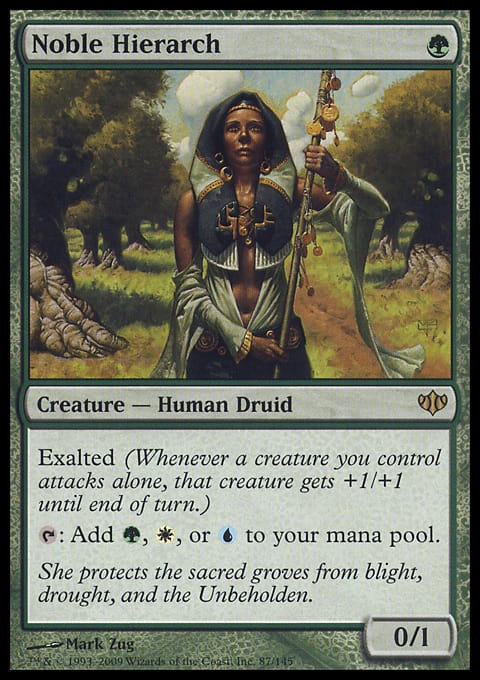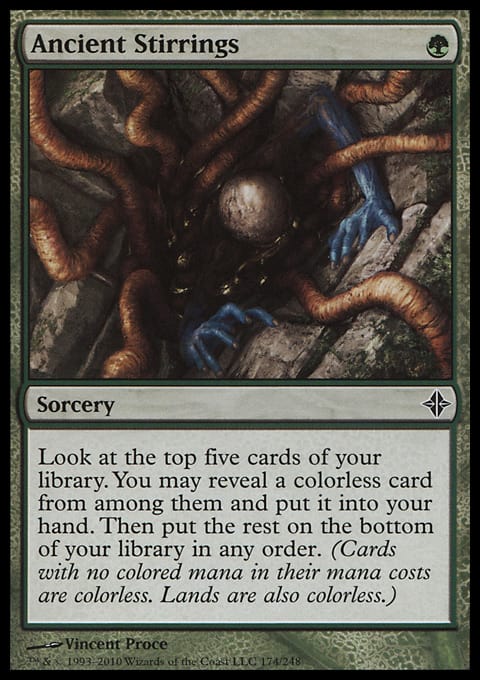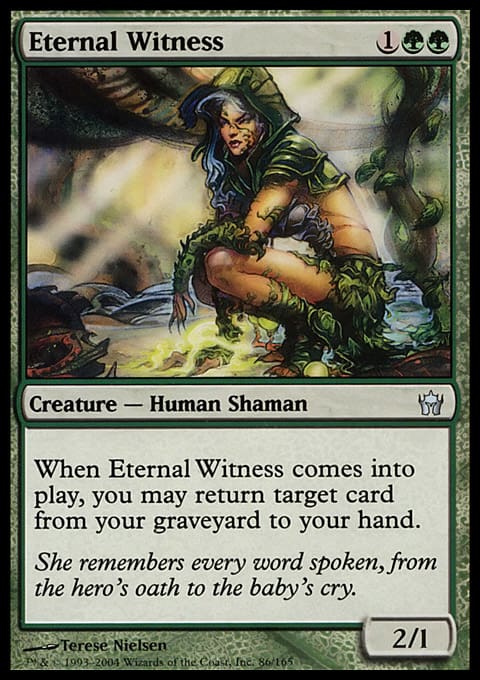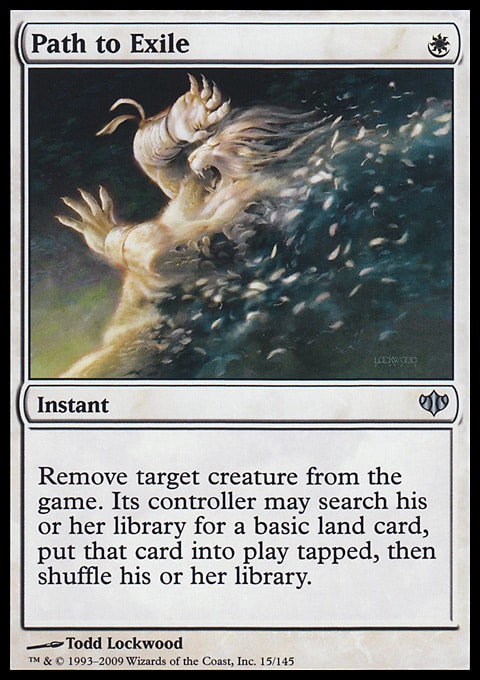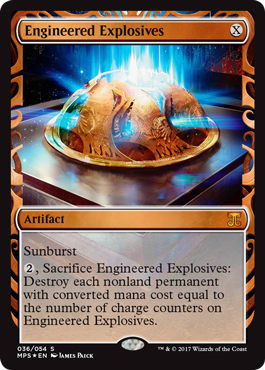Very, very soon, Kaladesh Standard will start in earnest. Everyone is excited for all of the possibilities that these bold new cards will bring, from obvious powerhouses like Verdurous Gerahulk, Chandra, Torch of Defiance, and Smuggler's Copter to the more preposterous potential centerpiece combo cards like Aetherworks Marvel, Panharmonicon, and Aetherflux Reservoir. And I am excited, too! Don’t get me wrong, Kaladesh Standard looks to be one of the more fun formats in a long time. All of the right engine cards are out there, tempting us to try just one more shell to see if this one will break Standard. If it’s any indication, my Pro Tour testing team, East-West Bowl, has upward of four different online testing matches going on simultaneously every night in an attempt to familiarize ourselves with all of the awesome options that this Standard presents. I’ve never been a part of such an intense collaborative effort, and I look forward to sharing all of the ins and outs of our testing process once the Pro Tour comes and goes.
But I confess, I am not a natural brewer. I don’t necessarily come up with great ideas in a fresh, unexplored format, and what ideas I do come up with are often ports of existing ideas from previous formats. I tend to tweak and tune ideas for a format as I wrap my head around all of the major archetypes and strategies that comprise said metagame. My proudest moments in designing decks come from adding my own unique angle to an established archetype, finding a way to tuck in a new gameplan or unexpected end-game trump that upsets the mirror match or beats a “number one enemy” by itself. Historically, that has been with adding recursive engines combined with heavier card-selection elements to a stock deck, such as my inclusion of Snapcaster Mage in Legacy Delver, the addition of maindeck Den Protector and more scry-lands in old Bant Heroic, the Whip of Erebos and Obzedat, Ghost Council in B/W Midrange, and now replacing some number of Matter Reshaper with Eternal Witness in my Bant Eldrazi list.
So, while we wait patiently for the Opens and Pro Tour to give us a starting point for the new Standard format, I want to share some of my insights into Bant Eldrazi with all of you. The truth is, Modern is both a slower-moving format (granting more longevity to any analysis I might produce) and a now-settled piece of the puzzle for any player hoping to make it to the Pro Tour. I would hazard a guess that at this point, there are as many Modern PPTQs as there are Standard ones, and the upcoming RPTQ cycle is Modern as well. Point being, if you aren’t well-practiced in Modern, you’re probably dead money going into this round of qualifiers for the Pro Tour. But fear not! This guide will help jump-start your Modern knowledge with a deep dive into what I judge to be the most well-rounded deck in the format.
Let’s start with what should by all rights be at the end, the much-coveted decklist.
Bant Eldrazi ? Modern| Ben Friedman
- Creatures (26)
- 1 Birds of Paradise
- 2 Eternal Witness
- 3 Eldrazi Skyspawner
- 4 Drowner of Hope
- 4 Eldrazi Displacer
- 4 Noble Hierarch
- 4 Reality Smasher
- 4 Thought-Knot Seer
- Spells (10)
- 4 Path to Exile
- 4 Ancient Stirrings
- 2 Engineered Explosives
- Lands (24)
- 1 Plains
- 2 Forest
- 1 Breeding Pool
- 1 Hallowed Fountain
- 1 Temple Garden
- 3 Brushland
- 3 Yavimaya Coast
- 4 Cavern of Souls
- 4 Eldrazi Temple
- 4 Windswept Heath
- Sideboard (15)
- 2 Engineered Explosives
- 4 Stubborn Denial
- 2 Disdainful Stroke
- 2 Stony Silence
- 2 Rest in Peace
- 1 Worship
- 2 Blessed Alliance
This list is specifically tuned to be better against Valakut, the Molten Pinnacle decks with six sideboard counterspells, and worse against Dredge and Abzan Company with only two Rest in Peace as your graveyard hate. I could easily see changing a single counterspell out for a Grafdigger's Cage, and perhaps cutting a Blessed Alliance or the Worship for a second Cage. Worship has begun to grow on me as a card for the mirror match as well as Burn, Death's Shadow, Affinity (make sure you answer their Inkmoth, though!) and several of the dumb decks like Bogles, Elves, Dredge or Merfolk. Watch out for Nature's Claim from Dredge, though. They will have it boarded in against you! Another reasonable option is Spellskite in the 75 somewhere. With Eldrazi Displacer, a Spellskite can really lock out the opponent in the mirror match, so that is something to consider. I would keep a single Engineered Explosives in for the mirror match specifically as a Stirrings-able answer to that particular set-up from my opponent.
Cage versus Rest in Peace is a debate that I had thought was settled for a long time, but I am beginning to question my once-sacrosanct set of Cages. For one, the Abzan deck du jour is no longer Collected Company-based, rather, it relies on Grim Flayer and Tarmogoyf to get the job done. Rest in Peace is a stellar card against Abzan Midrange, which does matter a decent amount. Grafdigger's Cage, however, is something you can find with Ancient Stirrings, which is huge in helping your consistency against a deck like Dredge. If you expect a large showing of Chord/Company/Evolution decks in your upcoming tournaments, you should play more Cages. If you expect to see boatloads of Abzan Midrange, you can play Rest in Peace. If Storm or Living End are concerns, you can certainly justify Rest in Peace. There is, of course, a notable dis-synergy between your Rest in Peaces and your Eternal Witnesses (or Matter Reshapers, if you choose to use that 3-drop) in the grindy matchups. You also generally want to put your Engineered Explosives on two counters against the Dark Confidant, Tarmogoyf, Grim Flayer deck, and you don’t necessarily want to trip over your own Rest in Peaces while you try to contain the opponent’s board with your sweeper. I lean toward Cage, personally, but I could be convinced to change it depending on what decks I see rising or falling in popularity.
All that chatter about specific sideboard choices basically boils down to: Make sure you have a firm grasp on the metagame, an understanding of all of the benefits and drawbacks of the candidates for each segment of your sideboard, and understand that you aren’t going to be able to cover everything perfectly in contemporary Modern.
If you don’t expect significant numbers of Valakut decks, for example, you are perfectly safe removing your Disdainful Strokes for additional hate for Affinity, Infect, Burn, or Dredge. I’d be thrilled to register the following sideboard in a tournament where not many people are piloting Primeval Titan strategies:
Enough circular discussions about sideboards, though! Let’s get into the core plan of the deck, mulligan decisions, the three-drop debate, and a very brief sideboard guide, because Modern has over forty viable decks you might face in a tournament, and it would take another article in its entirety to cover sideboarding against every archetype from Affinity to Zoo.
At its core, Bant Eldrazi is built in a classic mold, a mold that traces its origins back twenty years to the first Ernham-Geddon deck that Bertrand Lestree took to Pro Tour 1. Obviously, a lot has changed in twenty years, but the fact of the matter is, Bant Eldrazi differs from old Eye of Ugin-fueled Colorless Eldrazi by being less a Modern version of Stax (which is a Vintage lock deck that uses cards like Chalice of the Void, Trinisphere, and Sphere of Resistance to keep the opponent from casting spells while winning with colorless monsters) and more a Modern version of Mythic Conscription. You want to get a mana advantage early and bash your opponent with oversized monsters, with options to assemble a game-winning combo against removal-light opponents. In Mythic’s case, that was Sovereigns of Lost Alara + Eldrazi Conscription, and in Bant Eldrazi, that is Drowner of Hope + Eldrazi Displacer. Now, we don’t get to play with turn-three Jace, the Mind Sculptor the way old Mythic did, but we *do* get turn-two Thought-Knot Seer and turn-three Reality Smasher. And just like Mythic got to play a reasonable fair game if the opponent had appropriate cheap interactive spells to kill Noble Hierarch, Bant Eldrazi is generally well-equipped to grind out removal-heavy decks by digging for beefcakes like Drowner or Smasher with Ancient Stirrings.
But what does this history lesson mean for a practical Bant Eldrazi player today? Well, the first, most universal application of this knowledge is in helping us develop heuristics for mulligan decisions. Old Mythic Conscription had to mulligan hands without a mana accelerant, but that deck was packed with four Noble Hierarchs, four Birds of Paradise, four Lotus Cobras, and four Knight of the Reliquary. We don’t have nearly the luxury that Mythic had when it comes to abundant mana acceleration, because we can’t afford that much air in our deck as it currently stands. I believe that there is room for a Mythic-style Modern deck, but it obviously has to contend with a huge number of even faster linear decks as well as any Snapcaster Mage and Lightning Bolt decks that can interact with that type of mana accelerant strategy very profitably. Therefore, what hands should you be keeping, and what should you be shipping in the dark? I’ve heard a number of different opinions on the matter, and I particularly like my colleague Frank Vanderwall’s fairly concise guide, presented here with personal edits for clarity and my own preferences.
A seven card hand against an unknown opponent must have one of the following:
Two castable Ancient Stirrings (Simply one castable Stirrings isn’t enough)
OR
An Eldrazi Temple and a Eldrazi Skyspawner/Eldrazi Displacer or Thought-Knot Seer or an Ancient Stirrings to find one of your turn-two or turn-3 power hitters.
OR
A Bird/Noble and either one castable Ancient Stirrings, a three-drop to play on turn two, a Thought-Knot to play on turn three, or another Bird/Noble and a Smasher to play on turn three.
I’m leery of keeping a hand in the vein of three non-Temple lands, a Thought-Knot, a Displacer, a Smasher, and a Stirrings, especially on the draw. If you don’t hit a Temple off of that Stirrings or your two draw steps, you’re super likely to just die before you can deploy those spells. That’s basically a 60% chance to do nothing before a turn-three Displacer, and that’s just unacceptable in Modern.
Two of Path to Exile/Engineered Explosives can justify loosening up a mulligan choice, though. I personally would keep Path, Explosives, three non-Temple lands, Displacer/Skyspawner, Witness, Thought-Knot Seer, for example. Against a large swath of the Modern format (Affinity, Infect, Death's Shadow, Jund, Abzan) this hand is pretty good, and I’d be willing to roll the dice with it. A lot of draws speed this hand up by a turn, and against most of the common decks, this hand seems to have an above-average equity.
On six cards you can loosen up your range a little bit, of course. I’d keep a Stirrings, three lands, Thought-Knot, Displacer on six, where I wouldn’t necessarily keep a similar seven-card hand. Of course, in post-sideboard games or when you have prior knowledge of what archetype you’re facing, you should adjust your mulligan choices accordingly. I’d keep almost everything with a castable Rest in Peace against Dredge, or a castable Stony Silence against Affinity.
Repetition with the deck will help make you more confident in your own choices, but if you’re a bit inexperienced and you’re on the fence with a seven-card hand, you should generally default to mulliganning.
Let’s get to something a little bit more exciting than mundane mulligan choices, though. Those sweet, sweet Eternal Witnesses are hanging out in my maindeck, and Matter Reshaper is nowhere to be found! What gives? Well, here’s the deal. Matter Reshaper is a solid card when you are trying to be reasonably aggressive while still being resilient to removal. It has a good body, especially when you’re pumping it up with an attacking Noble Hierarch, but it seems to be coming up short for me in a variety of matchups these days. It’s not good versus Affinity or Infect, it’s decidedly medium in the mirror match, and it’s underwhelming against Path to Exile-based midrange decks. It stacks up worse against Abzan than it does against Jund, and Abzan is gaining on Jund as the midrange deck of choice.
The most popular decks in the recent StarCityGames Open in Orlando were Bant Eldrazi, Infect, and Affinity. I love Skyspawner against Infect and Affinity, and I recognize that it’s a necessity to trade with opposing Skyspawners in the mirror match. You are at a significant disadvantage in the mirror if you have to contend with opposing Skyspawners pecking you to death, as you can’t really blink them with Displacer to save yourself. You really don’t want to build up your opponent’s board, do you? If you get yourself in Displacer/Drowner board clogs, having to sacrifice a token every turn to nullify the opponent’s Skyspawner can quickly erode your board position when both players are making tons of Scions.
Why Witness over Reshaper, though? Basically, both are good in grindy matchups, but where Reshaper is easily replaced in the mirror match, a Witness/Displacer loop to get infinite Path to Exiles will beat even an opposing Worship eventually. Some people rely on Oath of Nissa and Elspeth, Sun's Champion for the mirror match, but I would rather have my mirror breaker double as excellent utility on turn three or four to rebuy a Path to Exile, rather than another clunky six-mana spell in addition to the Drowners that already occupy your top end.
The fact that Eternal Witness brings back Path or Engineered Explosives against hyper-linear decks like Affinity and Infect is icing on the cake. Playing with a virtual six Paths is awesome, and the first Path often buys you enough time to resolve a Witness to buy it back. This is a major upgrade over Reshaper, which never blocks against all of Affinity’s flyers or Infect’s Blighted Agents and Inkmoth Nexuses. Plus, if you ever assemble the full machine gun of Witness and Eldrazi Displacer against a deck like Abzan Company, Merfolk, or Elves, you’ll never go back to Reshaper again. Eternal Witness is just too much fun!
As for a brief sideboard guide, I’ll paraphrase and amend my previous advice from my last article dissecting the Eldrazi menace:
You want to board out Reality Smasher against hyper-linear decks, since you can’t race them. The exception is Burn, where you can sometimes race them and where Drowner of Hope doesn’t do much in the way of controlling the board, because they don’t make much of a board.
You can cut Engineered Explosives against decks like Tron, Ad Nauseam, and Through the Breach/Valakut.
Thought-Knot Seer actually comes out against Affinity, especially on the draw. A ground body is so astonishingly useless against them, it’s crazy. Plus, half the time your opponent will dump their hand before Seer even hits the table.
Engineered Explosives and Stony Silence are the pinnacle of dis-synergy against Affinity, but Stony is generally a game-winner and Explosives is your best card in the games where you don’t draw Stony. It’ll either cripple your opponent by eating a Mox Opal and two Ornithopters on turn two, or take out their Cranial Plating, Vault Skirge, and Steel Overseer on turn three or four. Engineered Explosives is so key against them that it’s worth having the dis-synergy with Stony Silence. In fact, if it weren’t for the Ad Nauseam and Tron matchups and needing Stony Silence against them, I would be very interested in cutting Stony Silence entirely for Fracturing Gust or Creeping Corrosion.
You can board out the Birds of Paradise against removal-heavy decks, if you want to try to increase your threat density. Against a Jeskai control deck, for example, I’d cut a Birds, two Path to Exile, and the Engineered Explosives for a set of Stubborn Denials and a Cage/Rest in Peace.
Stubborn Denial and Skyspawner are your keys to beating Blood Moon decks. Skyspawner allows you to get colorless mana to cast Smasher or Seer if you can stick the Spawner on turn two. Engineered Explosives will also answer Blood Moon if you are able to fetch for basic lands ahead of time, as a Plains, a Forest, and a pile of Mountains will get your Explosives up to three counters. I’d board out some mix of Eternal Witness, Drowner, and Smasher against a Blood Moon opponent, depending on how aggressive they are. U/R Delver with Blood Moon is way different from R/W or U/R Prison Blood Moon.
There are tons of archetypes out there in Modern, so again, I can’t cover every niche matchup in one measly article. I will say that as a final general rule of thumb, you can cover about 90% of matchups in Modern by basically understanding that your three game plans are to either try to lock out your opponent with Displacer/Drowner, beat them senseless with early Thought-Knots and Smashers, or try to not die to their linear nonsense before you are able to turn the corner with just enough power to kill them. The last type of matchup is the hardest (although still perfectly winnable), which is just par for the course, as Infect and Affinity are the toughest linears for any deck to beat, aside from being the other best decks in Modern.
If Bant Eldrazi overload isn’t a concern for you, feel free to leave a comment requesting the full, encyclopedic sideboard guide for every deck I can think of in Modern, as well as one or two fake decks that sound almost real that I’ll try to sneak in to make sure you’re all paying attention. (Four-Color Vehicleshift, anyone?)
Until next time, may your opponents grumble about how turn-two Thought-Knot Seers were supposed to be banned!
— Ben














